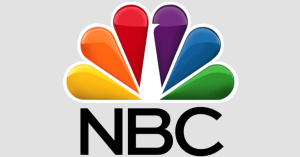The Atlantic hurricane season officially starts June 1, but the first tropical storm of 2018, Alberto, is moving toward the Gulf Coast with Alabama, Florida and Mississippi declaring emergencies. The new season also means there is a new group of names for storms hitting the region.
Names for hurricanes and tropical storms are chosen by the World Meteorological Organization, not the U.S. National Hurricane Center, notes Weather.com. In April, the organization voted to retire the names Harvey, Irma, Maria and Nate were retired after the hurricanes with those names left devastation in their wake last year. It is only the fifth time four or more names were retired after a single Atlantic hurricane season, following 1955, 1995, 2004 and 2005.
Videos by PopCulture.com
The practice of naming hurricanes dates back hundreds of years, when residents of the West Indies named storms based on the particular saint’s day it occurred on, according to the National Hurricane Center. The practice continued into the 1800s and early 1900s. For example, a July 1825 hurricane that hit Puerto Rico was named Hurricane Santa Ana.
The World Meteorological Organization re-uses the list of names every seven years. When the list used in 2017 comes up in 2023, Harold, Idalia, Margot and Nigel will replace the retirees.
Scroll down for the names being used in this year’s Atlantic hurricane season.
Alberto, Beryl and Chris
1. Alberto
2. Beryl
3. Chris
As of Friday afternoon, Alberto is a subtropical storm, according to Weather.com. It is expected to hit the Gulf of Mexico through Memorial Day weekend and could being flash flooding, strong winds, flooding and tornadoes to the Southeast. It formed near Cozumel, Mexico.
Debby, Ernesto and Florence
4. Debby
5. Ernesto
6. Florence
The last time the list of 2018 names was used was in 2012. That year, there was not a hurricane until Chris developed on June 17, 2012. The other names used for hurricanes that year were Ernesto, Gordon, Isaac, Kirk, Leslie, Michael, Nadine, Rafael and Sandy.
Gordon, Helene and Isaac
7. Gordon
8. Helene
9. Isaac
On May 24, the NOAA predicted a “near- or above-normal” 2018 Atlantic hurricane season. Forecasters predict 10 to 16 named storms, and a 35-percent chance of an above-normal season. They predict one to four major hurricanes.
Joyce, Kirk and Leslie
10. Joyce
11. Kirk
12. Leslie
“With the advances made in hardware and computing over the course of the last year, the ability of NOAA scientists to both predict the path of storms and warn Americans who may find themselves in harm’s way is unprecedented,” Secretary of Commerce Wilbur Ross said in a statement on May 24. “The devastating hurricane season of 2017 demonstrated the necessity for prompt and accurate hurricane forecasts.”
Michael, Nadine and Oscr
13. Michael
14. Nadine
15. Oscar
A “named storm” has winds of 39 mph or higher, while a hurricane is a storm with winds 74 mph or higher. Major hurricanes have winds of 111 mph or higher and are Category 3, 4 and 5 storms.
Patty, Rafael and Sara
16. Patty
17. Rafael
18. Sara
Sandy was the only name retired the last time the list was used. The deadly 2012 storm began on Oct. 22 and did not dissipate until Nov. 2. The storm caused $68.7 billion in damage, as its track took it all the way to the Northeast, leaving parts of New Jersey devastated. It is the fourth-costliest storm to hit the U.S., following Katrina (2005), Harvey (2017) and Maria (2017).
Sandy was replaced with “Sara” for 2018.
Tony, Valerie and William
19. Tony
20. Valerie
21. William
“NOAA’s observational and modeling enhancements for the 2018 season put us on the path to deliver the world’s best regional and global weather models,” Neil Jacobs, Ph.D., assistant secretary of commerce for environmental observation and prediction, said in a statement. “These upgrades are key to improving hurricane track and intensity forecasts, allowing NOAA to deliver the best science and service to the nation.”








